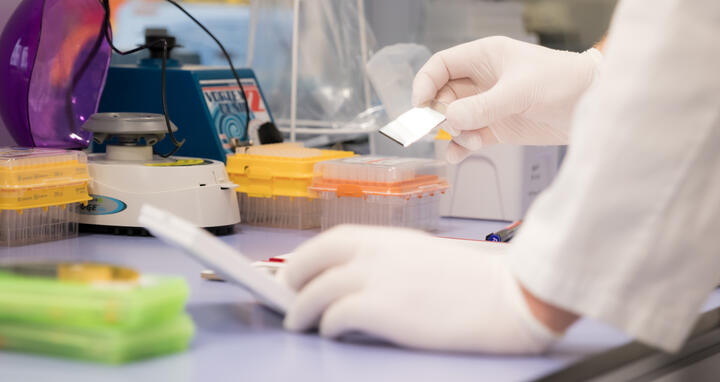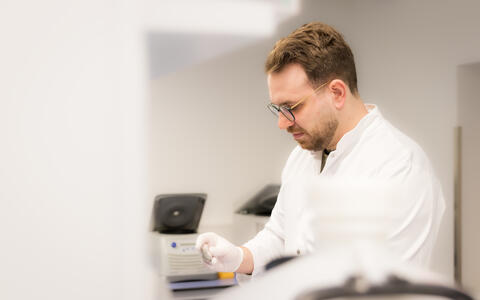Improving cancer diagnosis with quantum technology
Our project partners have demonstrated that this technique allows us to reliably identify cancer cells and even recognise certain molecular subtypes.
Early and extensive diagnosis is key to the successful treatment of most cancers, and this requires doctors to be able to analyse patient tissues quickly and reliably. But in the busy day-to-day hospital routine, the tasks of preparing samples, staining cells and performing molecular diagnostic tests all require precious time.
However, there could be an alternative: a way of detecting cancer with the microscope using mid-infrared (MIR) radiation. "Our project partners have demonstrated that this technique allows us to reliably identify cancer cells and even recognise certain molecular subtypes," says Dr Hendrik Bartolomaeus, a researcher in the Experimental and Clinical Research Center (ECRC), a joint facility of the Max Delbrück Center and Charité - Universitätsmedizin Berlin. To develop such a technique, Bartolomaeus and other scientists working at research institutes and in industry, including researchers from Humboldt Universität in Berlin and Ruhr Universität Bochum, came together to form a consortium. The Quantum Enhanced Early Diagnostics (QEED) project will run for five years and has been awarded total funding of €11.9 million from the Federal Ministry of Education and Research (BMBF).
Rapid diagnosis through shorter acquisition times
Dr. Hendrik Bartolomaeus and other researchers are working on a novel QEED microscopy for quantum-based early cancer diagnostics.
The research team hopes that a new kind of quantum sensor technology will make the technique suitable for everyday use in hospitals. This technology uses a new, spectrally resolved imaging technique based on quantum entanglement. Quantum-entangled light particles are linked together in a special way. If one particle is reflected by the object being studied, the entangled particle also provides information about what the object looks like without itself being reflected. Compared to non-quantum-based measurements, which can take several hours, this method can substantially reduce acquisition times – in the case of a 10 megapixel image, to just two minutes. Because there is no longer any need to stain the tissue, diagnostic procedures will become even faster, especially when hospitals have to process large numbers of samples.
"What's great about this method is that we don't require either an infrared light source or a mid-infrared sensor. All we need is an ultra-bright photon pair source that generates quantum-entangled photons," says Bartolomaeus. In his work at the ECRC, he aims to investigate whether and how he can use QEED in translational research, for example in animals. Over the next five years the research team will investigate whether the new diagnostic technique can also be used for cardiovascular, kidney and other diseases.






